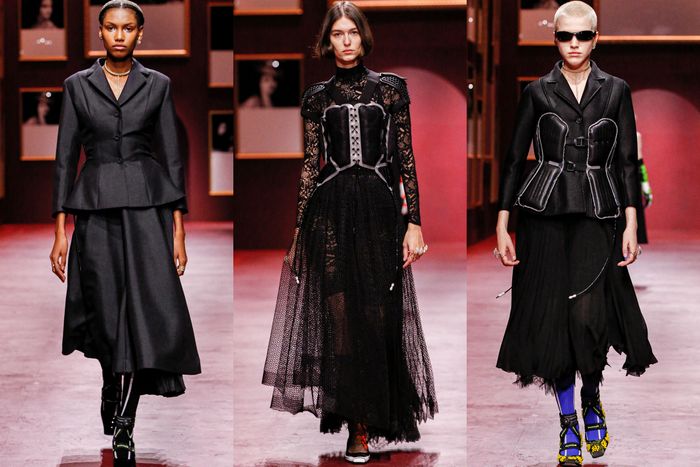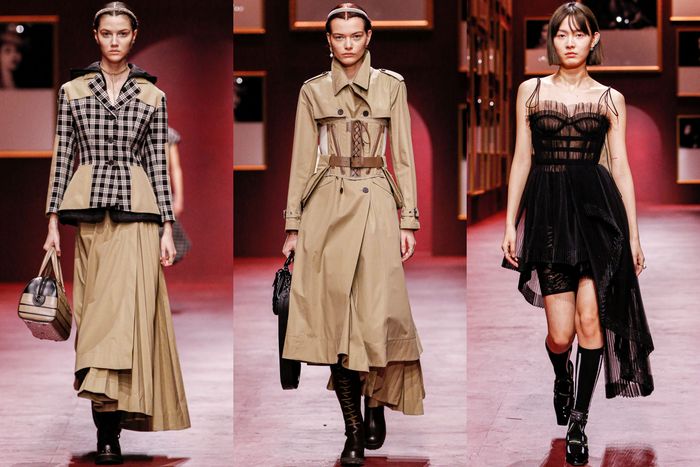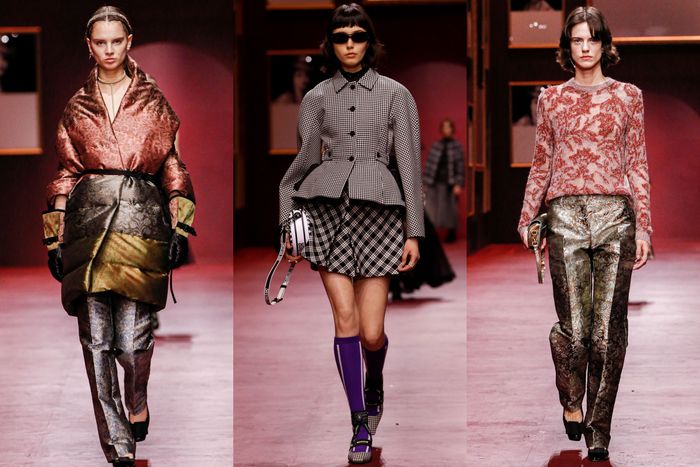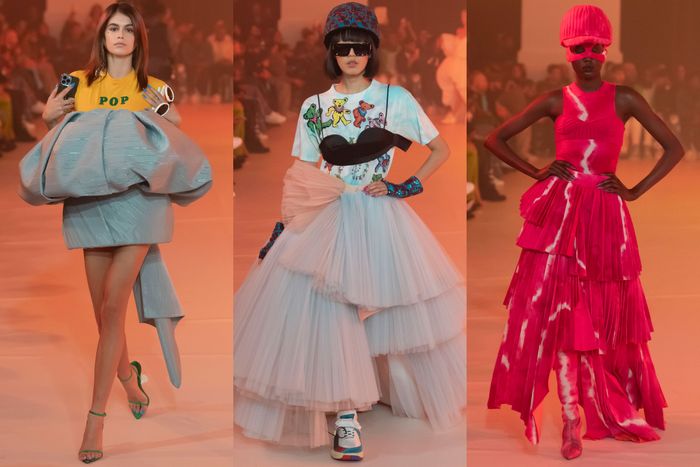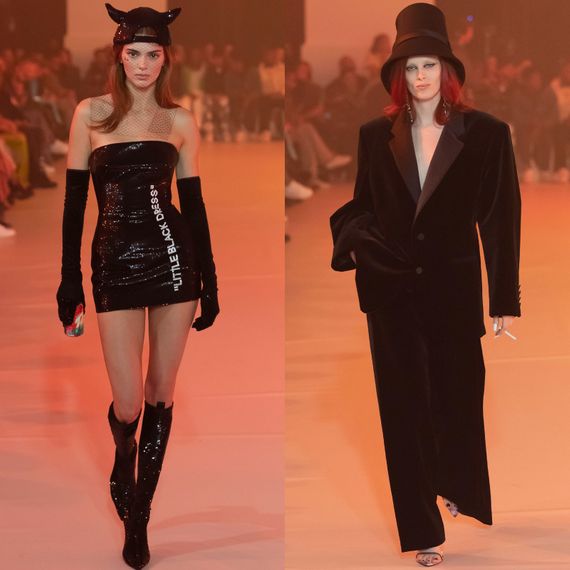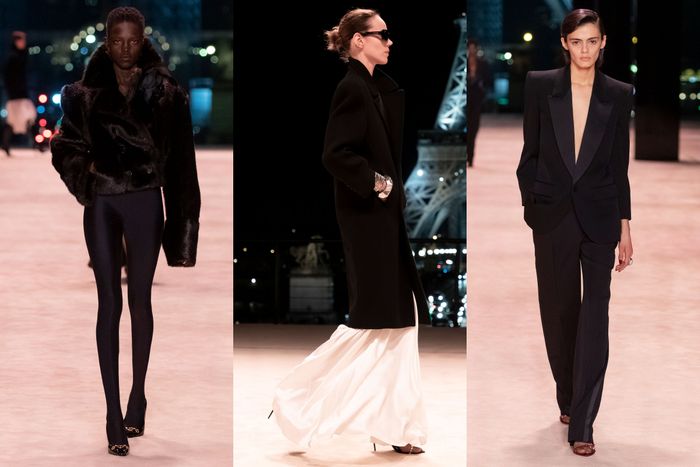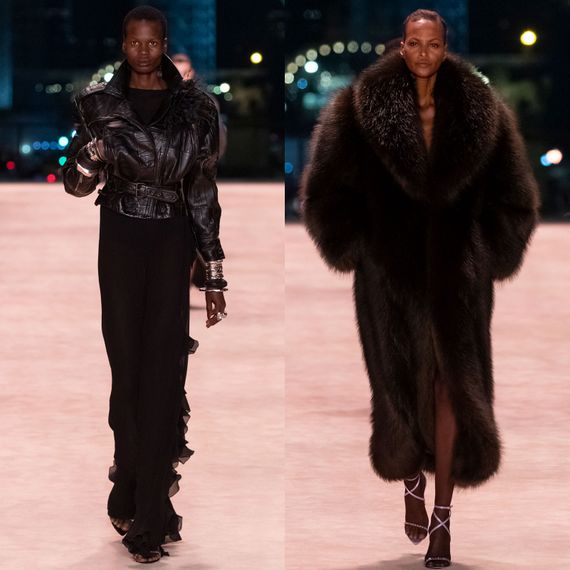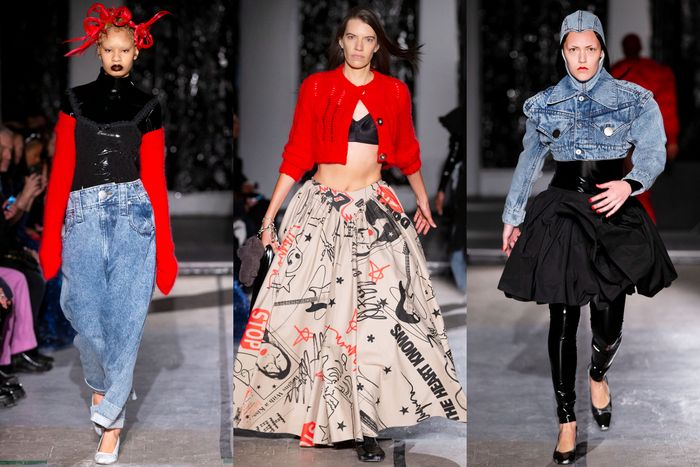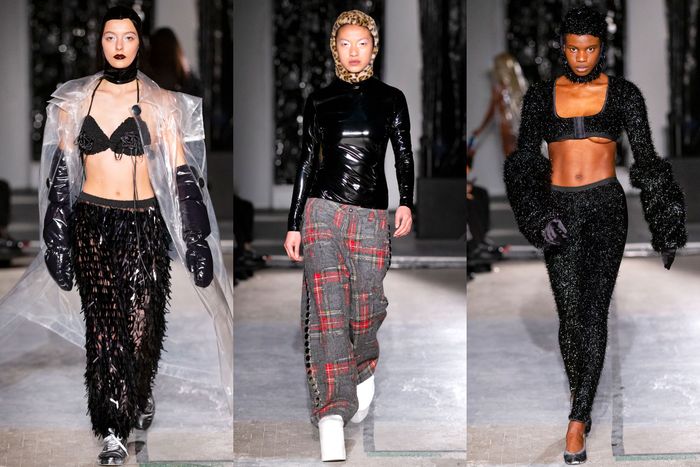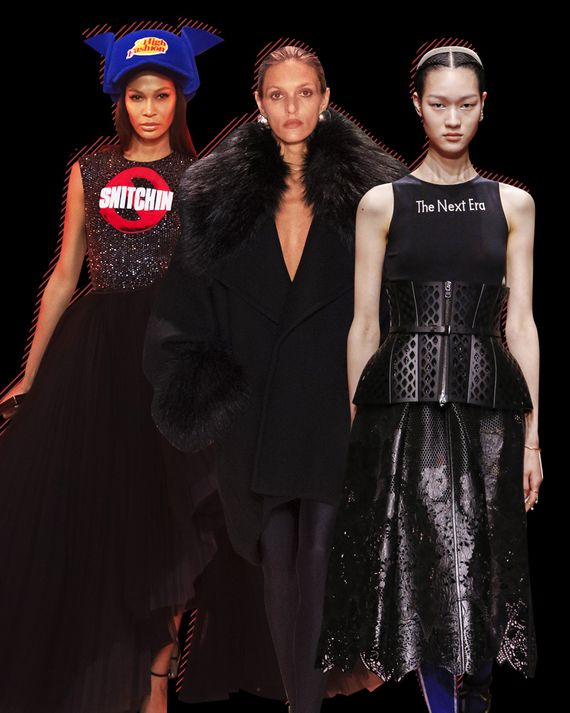
It took Paris less than 36 hours to overturn Milan’s applecart. For a week now, we’ve been raving about tailoring and the return of the suit — and on Tuesday, Maria Grazia Chiuri turned Dior’s famous Bar jacket inside out and, for extra kicks, teamed up with an Italian innovator that uses airbag technology and transistors to develop gear that protects your body and helps regulate body temperature.
You may not need padding for your ribs if your most strenuous activity is shopping, but that’s not the point. “The future enters us long before it happens,” the Austrian poet Rainer Maria Rilke once said. That was the sense as the Paris collections opened — and in more ways than Dior’s classy jackets, which did include hidden transistors.
The company Chiuri worked with, D-Air Lab, was founded in 2015 by Lino Dainese, and it makes personal airbag suits and other protective clothing for alpine skiers, motor-sports racers, and astronauts. “In a way, they have the same language as us because D-Air is also an atelier,” Chiuri told me. Considering that her Dior ready-to-wear has been rather safe and cookie cutter, the shift was remarkable one. When I asked her what had prompted it, she said, “Because I like exploring new creative technology. It can help us make clothes which on the body are more comfortable.”
The Bar jacket is something of an architectural wonder. Fitted through the chest and spreading slightly at the waist, it provided the foundation for Dior’s New Look in 1947. All of Chiuri’s predecessors at the house have played with its original form, which included padding to achieve that crisp shape. Essentially, she removed the padding and applied it to the front of one Bar style, adding the feature of airbag technology. She admits it remains a question whether Dior can produce such jackets in quantity in a ready-to-wear factory. But she felt it was important to make the attempt and to have some cross-fertilization with another type of industry. That’s one reason this collection was so strong. It showed guts and curiosity.
As it happens, one outfit — a black-gray knitted Bar jacket with matching leggings — already makes sense. Using a special fiber and tiny transistors embedded in the back, it helps maintain your body temperature so you don’t perspire. And the garments were superlight.
Chiuri called her collection the Next Era, a title the contemporary artist Mariella Bettineschi gave to a series of work she began around 2008 and which eventually included her portraits of women based on paintings by the likes of Raphael, Caravaggio, and Vermeer — except in Bettineschi’s portraits, the women have several eyes, as if their gaze were directed in multiple directions. We can see you, bud. Those portraits, mounted salon style on deep red in Dior’s massive show space, were the backdrop for the collection.
“The idea is to look to the past but look with a different eye,” Chiuri said. She did that in clever ways — by ripping into key signatures; by creating new, lightweight technical brocades that are pleasingly mellow in hue and as cool as jeans; by offering laces and netting that employ the latest knitting-mill technology; and by including sublimely simple dresses in a blend of wool and silk that reflect the rigor of Dior haute couture.
Paris has a reliable way of disrupting your notions and at the same time broadening the conversation. On Monday evening, in the presence of Rihanna — the queen has been everywhere this season, causing a royal stir — the design crew at Off-White celebrated the work of Virgil Abloh with a men’s and women’s ready-to-wear collection and 28 bespoke designs he had started before his death.
The ready-to-wear was straight-up fare, but the couture engaged on a deeper, wittier level. It embraced ideas Abloh championed, above all that you don’t need to be a fashion insider to play; anyone with panache can. The wonderful thing about the 28 looks is how seamlessly they combined elements of traditional high fashion — big, boffo skirts in tulle — with references to hip-hop (a black tulle gown with a beaded bodice and a “No Snitchin” graphic) and streetwear. An oversize black pantsuit on Karen Elson was obviously a nod to Saint Laurent’s famous tuxedo. Yet it had attitude to spare, and like the other pieces, it was informed by far more than Paris dressmaking traditions. And more is the pity that Abloh didn’t live to see this project continued because it would have filled a void in haute couture.
Sitting at the Saint Laurent show last night, I suddenly felt a chill. And it wasn’t the rare sight of the icy Freja Beha Erichsen on the runway in a sleek black wool coat and ivory chartreuse skirt that caused it. Rather, a long bank of windows overlooking the Trocadéro fountain had silently slid open.
Truth be told, I was too locked into Anthony Vaccarello’s collection to notice. Remember when Vaccarello did sexy clothes for perpetual party girls? Well forget about it. I sensed a change last season, a meditation on the style of Saint Laurent (which is no small thing), and this time, he really took the plunge. It was a gorgeous show both in the manner in which it was presented and in the smart innovations Vaccarello made.
First, he largely skipped daywear, whatever that term means today. He began with coats — peacoats, chesterfields, bombers — shown with evening chiffon or charmeuse. Most of the time, though, the look was just about the coat. They were sensational, a deft revue of the great Saint Laurent styles and the glamour that Helmut Newton’s images helped to give them. Among the coats were fake furs that looked remarkably like the real thing. Vaccarello, in his show notes, said Saint Laurent was drawn to Art Deco art and design but confined that influence to his homes; he didn’t reference the period in his fashion. Vaccarello hinted at it in the sloped shoulders of some coats and the sinewy line of dresses as well as stacked bracelets — a dead giveaway to Nancy Cunard.
But it was just a hint. Vaccarello ended the show with the celebrated Saint Laurent tuxedo. Yes, it’s a season of pantsuits, but Vaccarello’s had different implications. He seems to be finally discovering more of the provocative allure of Saint Laurent — and conveying it in his own way.
Guess who joined in the disruption on the first day? Patric DiCaprio and Bryn Taubensee, the New York designers behind Vaquera. This was their first Paris show, and it began with a model storming down the runway in a bright-red satin bomber and frilled G-string, followed by another in an ultratight jean jacket with a black cotton pouf skirt. The show never let up. There was exceptional denim including a euphorically droopy school-uniform jumper and lots of padded puffers (big this season) and cute plaid pieces and sequins in excess.
As DiCaprio said of their creative explosion, “It was fueled by Paris and wanting to be here. Paris is corny, and we were fueled by that corny energy.”



